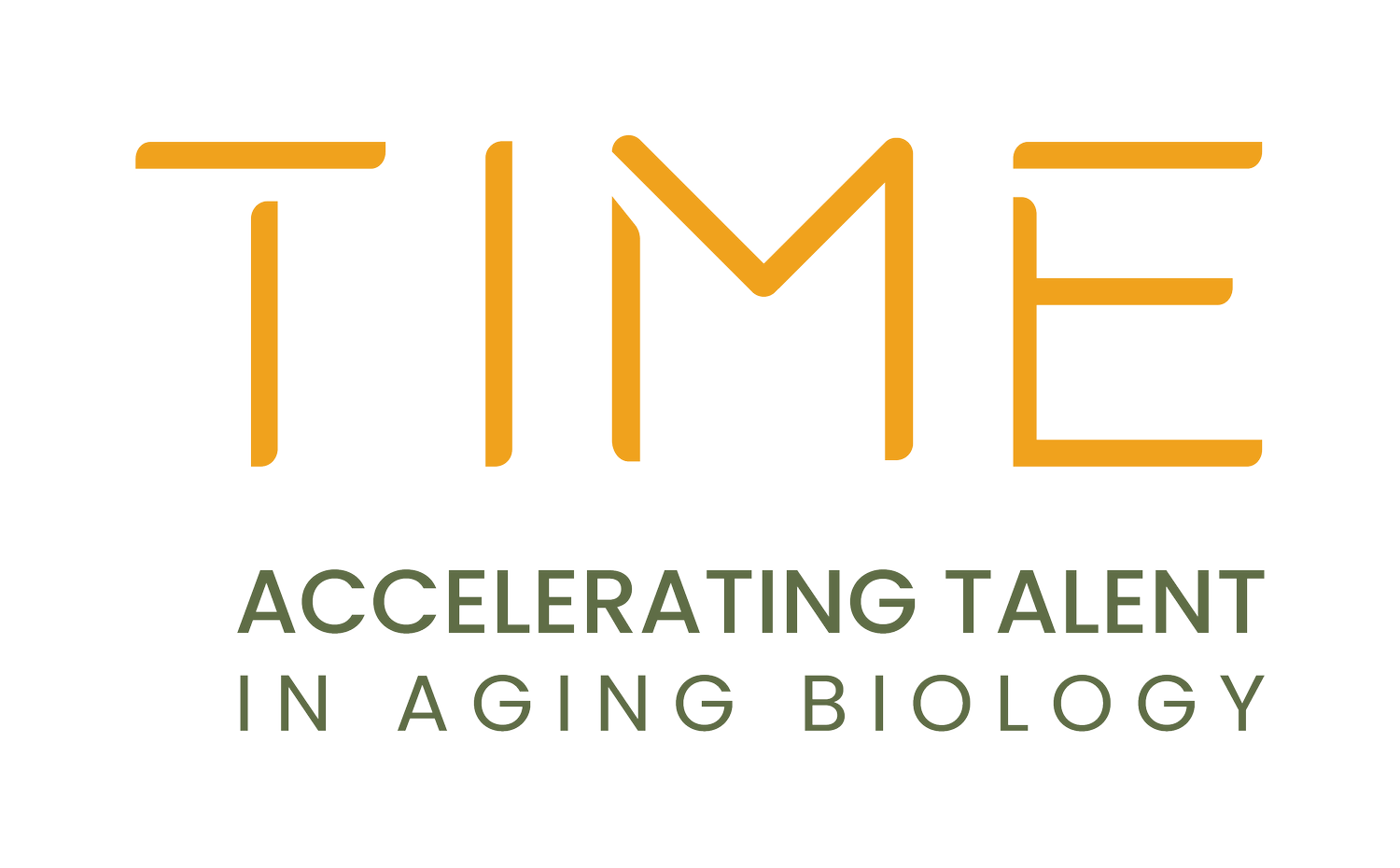Moments in TIME: Fellows Shaping the Future of Aging - Stacia Everts
From a young age, Stacia Everts found herself captivated by the mysteries of aging. That curiosity has propelled her into a diverse and exciting international research journey, spanning projects on geroprotective drugs, senescence, and gene therapy. Along the way, Stacia embraced the challenge of stepping far outside her comfort zone—traveling from the Netherlands to intern at the renowned Mayo Clinic and flying across the world to join the TIME Fellowship retreat in California to her next big move to Switzerland. With each step, she has moved closer to her goal of turning groundbreaking research into practical solutions for age-related challenges. As she sets her sights on exploring the role of mitochondria in metabolic diseases, Stacia continues to demonstrate the boldness, passion, and commitment that define the future of aging biology.
Courtney: Hi Stacia, super excited to talk today. I want to start by asking what drew you into aging biology? Was there a specific moment or experience that sparked your interest?
Stacia: The process of aging has puzzled me from a young age, and my curiosity pushed me to investigate further, which is what drove me to pursue this field academically.
Courtney: It sounds like that curiosity has led you down a really interesting path. Can you tell us more about the projects you’ve worked on so far?
Stacia: I am exploring different subject areas within aging biology, and I already have conducted research in geroprotective drugs, gene therapy, senescence and telomeres. My next project will focus on the role of mitochondria in metabolic and age-related diseases.
Courtney: You’ve also had some amazing international experiences—being from your initial C. Elegans work in Amsterdam, interning at the Mayo Clinic, and traveling to the TIME Fellowship retreat in the U.S. What was it like to step outside of your comfort zone and dive into these new environments?
Stacia: Simply put, it was incredibly exciting yet terrifying at the same time. Stepping outside of my comfort zone allowed me to grow so much as a researcher and as a person. By undertaking these adventures, I got the chance to meet so many amazing people in the aging biology space and gain a lot of new perspectives on aging biology as a whole. I am very grateful to each of my supervisors for giving me these opportunities to learn and grow.
Courtney: What motivates you to keep pushing forward in such a challenging field?
Stacia: Aging comes with many burdens, and my goal is to create possibilities that could help lift those burdens. I hope my research will positively change how we view and experience getting older.
Courtney: That’s an inspiring vision. What milestones have been especially meaningful to you so far?
Stacia: One of the highlights of my journey was interning at the Mayo Clinic’s Kogod Center for Aging with Dr. Joao Passos’ team. It was an amazing opportunity to work alongside brilliant researchers. Another major milestone was receiving the Dutch2USA grant, which allowed me to pursue that internship in the U.S. And of course, there are a few exciting things I’m working on now that I can’t talk about just yet!
Courtney: It must have been exciting to take your research from the classroom to an international stage. What role did the TIME Fellowship play in your journey?
Stacia: Since the beginning of my studies, I have been following the advancements and ground-breaking research in aging biology, but could only do so from a distance. Joining the TIME Fellowship was my first step into an international aging community and it opened up the world I had been watching for so long. Having a community like the TIME Fellowship was indispensable when I took the next steps in my academic career, because I could count on the unfaltering support of my mentor and my fellow fellows.
Courtney: It sounds like being part of the Fellowship has been transformational. What advice would you give to someone considering applying?
Stacia: The TIME Fellowship is truly a once in a lifetime opportunity for young researchers with a deep-rooted passion for aging biology. Through sharing their determination and wisdom, the brilliant individuals of Fellowship have given me the confidence and drive to keep pursuing my goals, however bold they may be. Our community continues to support each other even after the Fellowship officially ended, and I am honored to be part of something so special.
Courtney: With so many exciting projects under your belt, what’s next for you?
Stacia: Next, I will be moving to Switzerland to join the lab of Dr. Johan Auwerx at the EPFL for one last internship. Here, I will be researching the role of mitochondria in different metabolic age-related diseases. After this internship, I will be looking and applying for PhD opportunities within the aging biology field. I very much look forward to the inspiring journeys ahead and am thrilled to see what shape my future will take.





